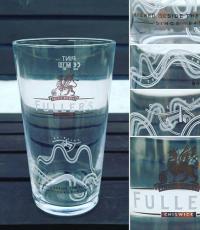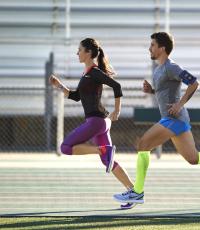How to cover the roof of the garage with bikrost. "Bikrost" for the roof of the garage
Most often, garages and other outbuildings are built with flat roof, which has a slight slope, no more than 20 degrees. The best option to cover such roofs is Bikrost roll roofing, which is described in more detail below. Read an overview of the characteristics of the foundation for a cinder block garage.
Choosing the right Bikrost brand for roofing
The construction material subdivided into specifications and is widely used in construction.
Main marking:
HKP - marking is intended for soft and hard roofing. The base is fiberglass on both sides, a bituminous layer is applied, coated on the front side, a layer of mineral chips is applied.
HPP - bikrost is used for waterproofing, as a lining on the foundation, basement. etc. It does not have such high strength as materials intended for roofing.
What's the best way to cover?
Bikrost is a special building material used for roof waterproofing. It consists of fiberglass impregnated with binders, based on glued bitumen. Its characteristics meet the highest quality requirements, and therefore, its use is not limited only to waterproofing, it is used to cover flat and soft roofs. Check out the guide on how to calculate the foundation for a garage.
Bikrost has a number of advantages:
- durable material
- Not subject to decay
- The presence of the top dressing protects the fabric from UV rays.
- Can be used as a vapor barrier, waterproofing
- Resistant to various weather conditions, thanks to which it is successfully used in any climatic zone of the country
- The ratio of excellent quality and affordable price
Bikrost is glued to the roof by melting the bituminous layer on the coating, this procedure is performed using a gas burner. Since there is an open fire during laying, Bikrost should only be laid on top of non-combustible materials. When covering a soft wooden roof gable roof, open fire is used with caution or excluded altogether.
How to cover?
Before laying Bikrost on the roof, the roof surface should be prepared, since the material is soft and demanding on the quality of the base:
- The base must be dry;
- The complete absence of various irregularities;
- The roof surface must be cleaned of dust and dirt, as well as any foreign objects;
- Even the smallest cracks and dents must be repaired with cement mortar or putty;
- Then treat the surface with a primer for the best adhesion to Bikrost.
The very technology of covering the roof of the garage with Bikrost is as follows:
- The rolls are laid out across the slope, keeping an overlap of at least 8 cm;
- All work is done strictly from the bottom up;
- From the end part of the rolls, the overlap is observed from 15 cm;
- The ends of different rolls should not form a single joint line, so they should be displaced relative to each other;
- The required length from the roll is rolled out, here the overlap is taken into account;
- Then the segment rolls from both sides to the middle, heats up gas burner and is pressed by the roller to the working surface;
- The rolling process itself takes place from the middle to the end, on each side. Attention! It is impossible to walk on a rolled and freshly welded roof, as the integrity of the coating is violated, as a result of which the waterproofing;
- During rolling, it is necessary to ensure that there are no folds and wrinkles;
- When rolling out the first layer, you should immediately take care of covering the vertical abutments of the roof, if any. To do this, a small piece of 40 cm in size is cut off from the bottom layer of Bikrost, of which 25 cm will go to cover the vertical surface, the rest - to cover the horizontal surface.
The video shows a step-by-step scheme for covering the roof with Bikrost rolled waterproofing material:
Photo



roof insulation
How much does it cost to make a Bikrost garage roof?
The cost of covering the roof of the garage with Bikrost varies from 150 to 250 rubles per square meter. m. Much depends on the condition of the original base and the required number of layers. If the roof is bad condition, the cost of work can be significantly increased. This price does not include the price of the material. Read and how to build.
Video
As can be seen from the above, Bikrost is a high quality material that can well waterproof the roof of the garage, as well as serve as an external covering for it. Affordable price for a rolled roof of this quality is acceptable, which makes this material even more popular. And the installation of Bikrost will not be difficult even for a beginner.
An important stage in the construction of a car garage is the laying of the roof. Often roofing material was used for this, which protects the surface from moisture. However, this material is short-lived, and therefore people use bikrost roll building material. Before laying Bikrost on the roof of the garage, you need to familiarize yourself with the main features of such rolls.
Bicrost is a roll material that is used to cover the roof of garages and other buildings. Some experts call it the best waterproofing product that can reliably protect the roof from leaks. In the manufacture of bicrost, fiberglass is used, which is completely impregnated with liquid bitumen. It is thanks to this component that the protective rolls do not allow moisture to penetrate inside the garage.
Among the main advantages of using such waterproofing are the following:
- Reliability. The high strength of bicrost makes it one of the most reliable waterproofing products that can be applied to the surface of a garage roof. Even a large amount of melt or rain water cannot harm the roll coating.
- High level of grip. The rolls have a rough surface that adheres securely to the garage roof and forms a strong seam.
- Protection against mechanical influences. The surface of the rolls is so durable that even after contact with sharp metal products, no marks remain on it.
Coating characteristics
There are two main types of bikrost roll coating, with the features of which it is better to familiarize yourself with before use.
Lining
Lining sheets are used for laying the lower waterproofing layer of a garage roof. Such products are made of cardboard, which is soaked in a bituminous mixture. Experienced builders do not advise covering surfaces only with lining rolls, as they are poorly protected from moisture and temperature changes. With constant exposure to moisture, such material will last two and a half years, after which it will have to be replaced.
The main advantage of lining rolls is that their surface is not very sticky, as it is covered with a protective layer of talcomagnesite.
roofing
To make the garage roof more protected from rain, snow and other precipitation, it is covered with rolls. roof type. Such material is used when laying the top layers of waterproofing. It is much more reliable than the lining roofing material, as it has the best protection from low temperatures and high humidity. The service life of roofing products is five years.
The advantages of rolls of this type include their density, due to which the waterproofing copes with mechanical damage.

Varieties in composition
In the manufacture of bicrost use various materials that have certain characteristics. It is recommended to familiarize yourself in advance with what it is created from in order to select the highest quality type of waterproofing rolls. Building material is created from:
- polyester. This is the most common variety that many use when creating a garage roof. In the production of building materials, polyester is added with liquid bitumen. Some manufacturers for additional protection polyethylene is added from humidity.
- Fiberglass. The waterproofing product is created from two main layers. The bottom one consists of polyethylene and bituminous mixture, and the top one is made of shale with granulate, which protect the rolls from damage and ultraviolet radiation.
- Fiberglass. Fiberglass rolls are very similar to fiberglass products, as they are also made from slate, bitumen and polyethylene. However, the quality of manufacture of fiberglass building materials is much better and therefore they are used to create the top layer of waterproofing.
- Fiberglass frame type. Experts do not advise using this building material, as it is the least reliable.

How to cover the roof with a roll bikrost with your own hands
The technology for laying rolled materials on the surface of the garage is quite simple. However, despite this, before laying building materials, you need to familiarize yourself with the nuances of this process.
Tool preparation
Before you start laying a waterproofing coating, you need to figure out what will be needed to complete the work. It is impossible to lay a rolled bicrost without:
- gas burner, which is needed to preheat building materials;
- roller used for uniform rolling of rolls on the surface;
- dry cloth to smooth the surface;
- sand with cement, which are used to cover potholes with cracks on the roof.

Surface cleaning
Before laying the bicrost, the roof should be prepared for work and completely cleaned of debris and other contaminants. To do this, you will have to climb onto the roof with a broom and sweep the garbage with dirt. Then the surface is carefully inspected to identify cracks and chips. If the roof is cracking, you will have to plaster it with concrete mortar.

Coating laying
The cleaned surface of the roof should be well wiped with a gasoline solvent mixed with bitumen and nefras. Then it is dried, after which a waterproofing layer can be laid on it.
Before laying, a piece of bicrost is cut off from the roll, with which we cover the roof in the future. After laying the required amount of material, it is heated with a gas burner and pressed against the roof with a roller. When the laid building material has cooled down, a second layer of bicrost is laid on top.

What are the advantages and disadvantages of this material
Like any waterproofing material, bikrost has advantages and disadvantages. The pluses include:
- small mass;
- environmental friendliness;
- surface hardness and toughness.
Among the disadvantages are the following:
- high flammability;
What is bikrost, where is it used and how complicated is the technology of laying bikrost on the roof - questions that are very easy to answer! Despite the novelty of the material, covering the roof with bikrost is not difficult, because this material is plastic, obedient and ideal for roofing works, where the angle of inclination does not exceed 8-15°. And this means that the coating is ideal for a garage, barn, summer kitchen and other buildings for household and residential purposes.
Bikrost is a rolled welded roofing material. Representing an improved version of roofing felt, the product is used for arranging roofs of buildings with a small slope. The laying of bikrost requires the use of an open fire for heating and subsequent melting of the inner layer of the coating, therefore, it is possible to cover the roof with bikrost only if the base is non-combustible.
Advice! High moisture-proof characteristics and ease of installation led to the use of the material as a waterproofing layer on any structures: supports, piles, junctions, etc.
Soft roof bikrost is composed of polyester, fiberglass / fiberglass with double-sided bituminous impregnation. This feature allows you to lay the material on any solid non-combustible base. The soft roofing covering is realized in rolls of various footage. The price of products is low, the quality fully meets the needs of users, the breadth of application is unlimited - all factors make the roof in demand in low-budget and budget construction work.
The bikrost roof is distinguished by marking:
- HPP - standard material type, in the production of which a bituminous layer enriched with additives is applied on both sides to a roll of fiberglass. Polyethylene is used as protection. Rolls are shown for arranging the lower layer of the roof.
- HKP - material based on fiberglass. At the same time, the lower bituminous layer is covered with polyethylene, while the upper one is protected by fine-grained dressing from granulate or shale. This layer protects the roof from UV rays, extending the life of the roof covering.
- TKP - rolls, which are based on fiberglass. The protective layer on the bottom is polyethylene, on top is granulate and/or slate. In terms of its strength and quality characteristics, this type of bicrost surpasses all others, therefore it is indicated for use on inverted roofs as a final coating.
- Chamber of Commerce and Industry is a product based on frame fiberglass. It is used mainly for the lower layer of the roof, a protective polyethylene layer is present on both sides.
Fact! There is a polyester-based bicrost, but due to the high cost of the material and characteristics similar to other products, rolls are used much less frequently.
Material advantages:
- Affordable price;
- Flexibility;
- Ease of installation;
- Lack of complex technological processes drying, preparing the roof for installation and the use of special equipment;
- You can handle the coating yourself;
- Fast term of "ripening" of a roof;
- No waste during installation;
- Opportunity quick repair or renovation of the roof: bikrost can be applied locally to the roof without replacing the entire coverage area;
- The extremely low weight of the soft roof does not weigh down the entire structure, due to which the bikrost is indicated for flooring on the roofs of buildings erected in soft soils.
Flaws:
- Not too long service life: Bicrost should be changed every 3-5 years;
- Do not work with the material in the rain;
- If the protective layer of powder is accidentally removed, the rolls will melt, the sheets will become thinner, and replacement will be required.
Important! Self-adhesive coating can be laid in 2 or more layers - it all depends on the load on the roof and the strength endurance of the structure itself
Laying technology

To cover the roof with a bikrost with your own hands, you should prepare:
- Hook made of wood or metal;
- gas burner;
- Roller or brush;
- dry rag;
- Primer or composition of 3 parts of kerosene and 1 part of bitumen;
- A mixture of cement and sand for covering chips, potholes.
Remember to work on a dry day, preferably without strong winds. Before covering the roof, you need to prepare the base:
- Clean the roof surface from the old coating, remove debris.
- Repair chips, cracks.
- Lubricate the entire surface of the roof with a primer, nefras or bitumen on a gasoline solvent - you need to lubricate the entire surface and wait for the composition to dry completely. It is easy to check this: run a rag over the surface - the rag is dry, everything is ready.
Important! Bikrost should be laid from the bottom up, using a hook made of wood or metal to unroll the roll.
- Roll out the first roll of bicrost perpendicular to the slope of the roof, cut off the desired piece, roll the roll from both sides to the middle.
- Heat the coating with a burner and gradually, without slowing down the process, lay the material. Molten bitumen will allow you to firmly glue the material to the base.
Important! It is impossible to walk on a freshly laid roll! The roof roof is still soft, any impact will lead to dents and a violation of the integrity of the coating
- The second roll should be laid overlapping the first roll by at least 10 cm to ensure that all layers of the strips are securely joined.
We cover the next layers as the first two, being careful when melting the base. If necessary, one bedding layer is covered with others, the laying principle is the same: wait until the bottom layer is completely dry and hardened, lay another one on top. Such a multi-layered adhesive structure is especially necessary at the junction of other buildings, roof connections with drainage holes or chimneys.
Important! To arrange a multilayer cake, rolls marked for the lower and upper layers should be used.
If the roof device is made correctly, the roof can withstand up to + 80C without the slightest violation of the integrity of the structure. Moreover, after drying, bikrost gains strength and resists random mechanical influences well: falling branches, cones, twigs and other objects.

- It is impossible to cover a roof with a large slope of the roof. In the case of an inclination angle of less than 15 degrees, laying is carried out perpendicular to the slope, if the inclination angle is greater, it is better to make the layout parallel.
- If the roof is on a newly built object, double laying should be done: the first layer is HSP, the second is HKP. The main condition is the bottom sheet without sprinkling, the top one with a protective fractional layer.
- In the absence of a gas burner, a torch made of tow soaked in a combustible mixture is suitable, as an extreme measure - gluing with bituminous mastic, but it also needs to be warmed up well.
- The external temperature of the work should be above +5 degrees, if it is necessary to renew the roof in sub-zero temperatures, the bicrost rolls are kept for a day in a warm room so that the roof does not crack during rolling.
- Sloped roofs should be covered from the bottom up to avoid leaks at the junction points of the sheets.
The service life of the roof is no more than 8 years, but you need to buy a bikrost immediately with a margin for overlap. It is not difficult to repair or renew a roof with a bikrost, the principle of operation is the same: clean the base, level it, prime it, and to understand even more precisely how to lay a bikrost, watch the video.
The price of the material is low, from $ 2 / m2, the scope is wide, there are no high installation costs, transportation is simple, so this roll roof is perhaps one of the most affordable and practical for arranging the roofs of garages, other residential or commercial buildings.
The modernized bikrost material is very similar in its features to roofing material. This is a soft roofing material that is successfully combined with all elements of roof installation. Sold in rolls. They are used for roofing roofs with a non-steep angle of inclination. Excellent in terms of pricing. Has excellent quality and reliability in use.
- Polyester,
- Fiberglass or fiberglass
- Bituminous impregnation

The above elements in their structure favorably fit on all types of solid roofing systems. Bikrost actively protects the roof from leaks, it is recommended to use it both for laying a roof on a new building and for repairing a “used” old one.
Bikrost is sold in roll packs with different footage and the factory of its production. An amazing advantage is the price of the material, its functional features and strength. Bikrost is used for the construction of residential buildings and for large-scale buildings industrial buildings. It is budget friendly and durable.
Bikrost is classified into the following types:
At first glance, the abbreviations do not carry a semantic load. Let's take a look at the listed types below.
Species variety of bikrost
What do the types of bikrost mean? Let's take a look at the building data.
- HPP is a standard type of bicrost. Its manufacture takes place in several stages: the bituminous layer is attached to the fiberglass and a protective polyethylene film is applied to it. HPP is inherently the bottom layer of roofing.

- HKP - its main containing - fiberglass. The features are similar to HPP. Has a layer of bitumen and polyethylene. The top layer consists of granulate (possibly fine slate), which is reliable protective coating from harmful sun rays.

- TKP is the main fiberglass in the composition. The lower tier is represented by a polyethylene layer, the upper tier is represented by granulate or slate powder. TCH is used as the upper level for inverted roofs.

- Chamber of Commerce and Industry - for the most part consists of frame fiberglass. Its defining function is to serve as the lower tier of the roof in cooperation with HKP, TCH. TPP has a polyethylene sheath.
Bikrost can also have a polyester base. This type is extremely rare.
Standard Bicrost Laying Technology
List of tools for laying bicrost:
- gas-burner
- hook made of wood or metal
- bituminous substance
Bikrost is placed on roofs with hot bitumen, using a gas burner. Bitumen is placed from the bottom up.

We suggest considering the step-by-step components of laying:
- Clear the concrete base of the roof from different kind pollution and water spraying
- Apply a primer to the roof surface. The primer may consist of a bituminous liquid with the addition of gasoline, nefras, primer. Work out the top layer of the roof with mortar. Leave to dry
- Bikrost unfolds perpendicular to the slope of the roof
- The surface is melted with a gas burner and rolled out with a hook. The bituminous layer promotes good interaction between the material and the screed

It is important to note! The newly laid bikrost does not need to be touched, walked on it. It should lie down until completely dry. In the event of the formation of dents, its surface may begin to collapse.
- After complete drying, you can start laying the second roll. Laying is carried out with an overlap of 100 millimeters
- Continue following the above pattern
It is not difficult to lay a bikrost, cover the roof with a soft roof. The main thing is to fulfill the requirements. The first layer is laid without problems, it is the basis for the second tier of laying.

Individual houses usually have pitched roof different configuration, but there are also solutions flat roof. As for outbuildings or garages, they most often have a roof slope of less than 20º. For such structures, Bikrost or roll roofing is best suited. Before we tell you how it is laid, let's look at what it is and what varieties exist in today's roofing materials market.
Varieties of built-up roofing and their technical characteristics
In the photo - roofing in rollsRolled roofs are laid over a sand-cement screed. Preliminary work must be carried out on waterproofing and thermal insulation. In addition, welded roofing can be used to repair old roofing. Bikrost laying technology on new roofs provides for a flooring of two layers with different characteristics; when repairing, it is enough to use one layer of a rolled roof. Bikrost HPP is a base made of fiberglass, on which a bituminous layer with special additives is applied. Top and bottom of the base is covered with a protective film. It is used as the bottom layer for the installation of new built-up roofs. Bikrost HKP differs from HPP in that the upper protective layer is made of granulate instead of a film. This variety is used for the device of the top layer of a new built-up roof. Gray granulate (grains) or slate (flakes) is used as a topping. The dressing protects the bituminous layer from ultraviolet radiation. The weight of this material is higher than with a film protective layer. Bikrost TKP differs from HKP in increased characteristics. For its basis, frame fiberglass is used. The top layer of TCH is made of granulate or shale, and the bottom layer is a protective film. If HKP can only be laid on unloaded roofs, then TKP is also suitable for the installation of the top layer inverted roofs. Bikrost TPP is used for the bottom layer of the roof in combination with the top layer made of TKP or HKP. Just like in HPP, the frame fiberglass is protected from above and below by a special polymer film.
If you look at the reviews, then usually for new roofs it is not advised to use the same types of base as the lower and upper layers. If you are using HCP for the top layer, then for the bottom layer it is better to take the CCI.
In the Russian market of roofing materials, the leading position is occupied by the roll-on built-up roof Bikrost TechnoNIKOL and. The manufacturer issues for all its roofing materials quality certificate.
Job Instructions
The photo shows the stacking of the rollSoft roof Bikrost is laid on the prepared surface. For this cement-sand screed free from debris and dust. Check its humidity, which should be no more than 4%. If the old roof is being repaired, the previous roofing carpet is removed from it and all cracks and joints are sealed. Before laying the bikrost, the roof surface is primed with special compounds called primers. Primers can be prepared from bitumen grades BN 90/30, BN70/30 or BNK 90/30 and a solvent in the form of gasoline, nefras in a ratio of 1/3. For primers, you can use special bituminous mastics that have a heat resistance above 80ºС. Apply a primer coat with brushes or brushes. The soil must be completely dry. To do this, it is carried out with a clean, dry cloth, if it is not painted, you can proceed to the next step.
How to cover the roof with Bikrost?
The rolls are rolled across the slope with an overlap of more than 8 cm. Work is carried out from the bottom up. At the ends of the rolls, the overlap should be more than 15 cm. The ends in different rows should be offset relative to each other so as not to give a single joint line throughout the roof. How to work with Bikrost? The roll is rolled out, the required overlap is measured, rolled from both sides to the middle, heated by a gas burner and rolled with a roller. In this case, the roofer rolls the roll onto himself in one direction, and then moves to the other side. Walking on a freshly welded roof is not allowed! There are dents from traces, the properties of the material are violated, in particular, the Bikrost waterproofing suffers. A properly heated roof layer at the junction gives a small bitumen drip. When rolling a heated cloth, you need to ensure that there are no folds, wrinkles, dents. To do this, roll the cloth from the center to the edges, Special attention give overlap lines. Together with the first layer of the roofing carpet, various types of junctions are also covered. How to lay a rolled roof at the junctions? To do this, be sure to stick in two layers of strengthening the roof. How to glue reinforcements? A piece 40 cm in size is cut off from the material that makes up the lower layer of the roof (25 cm on a vertical surface, 15 cm on a horizontal one). First, the part that is glued vertically is melted, and then the part that is glued horizontally. After the top layer of the roof is laid, the same procedure is performed, only the horizontal edge should be 25 cm. Instructions on how to work with adjunctions can be viewed in the video:





